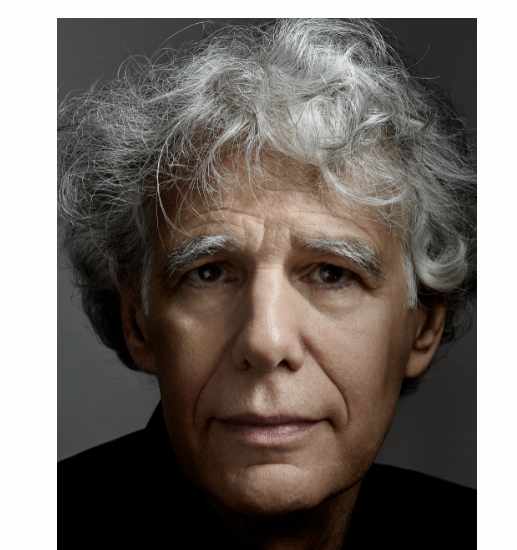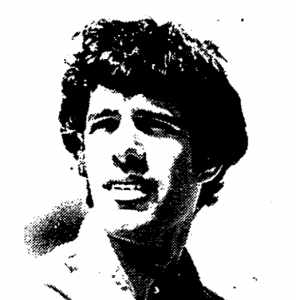Featured Articles
Thomas Hauser Enters the Boxing Hall of Fame

There were 25 names on the Observer Category ballot sent out to those casting votes for the next round of inductions into the International Boxing Hall of Fame. Voters could choose as many as five. The top two vote-getters would get in.
A range of disciplines are included in the Observer category: journalists and photo-journalists, TV executives, broadcasters, record-keepers, statisticians, cartoonists. Some of the 25 potential inductees are long dead such as Percy Dana the great photographer who was omnipresent back in the late 19th and early 20th centuries when the San Francisco Bay area was swarming with big fights. The majority of those on the ballot, however, are still active. They are contemporaries of the electors.
This reporter had a strong feeling that longtime boxing writer and current TSS mainstay Bernard Fernandez would make the cut. Induction into the IBHOF is by nature a lifetime achievement award and Fernandez certainly qualified on that count. Among those stumping for him was ESPN’s Dan Rafael who shares his picks with his readers. Rafael’s opinions circulate widely among his peers.
We guessed right with Fernandez and then had more reason to strut when the other top vote-getter turned out to be frequent TSS contributor Thomas Hauser.
We didn’t see that coming. Yes, we thought that Hauser was more than qualified. Considering some of the “Observers” that were ushered into the Hall before him, his induction was long overdue. But much of Hauser’s work falls under the heading of investigative reporting and he has never been shy about airing his political views so we figured that he had alienated just enough voters to ensure that he would be kept waiting indefinitely.
We miscalculated.
Thomas Hauser
Thomas Hauser was born in New York City and grew up in Larchmont, an upper-middle-class village roughly 25 miles north of the city in Westchester County. His father was an attorney with a small general practice in the city and Hauser followed him into the practice of law, clerking for a federal judge and then working as a litigator for a Wall Street law firm after graduating from Columbia Law School.
When Hauser got bored with the life of a Wall Street lawyer, he thought he would give writing a try and then hit the jackpot with his very first book. “The Execution of Charles Horman” was nominated for the Pulitzer Prize, Bancroft Prize, and the National Book Award.
Horman was a left-leaning journalist who was murdered while investigating the possible American masterminding of a military coup in Chile. The book spawned the movie “Missing” which earned Academy Award nominations for Best Picture, Best Actor (Jack Lemmon), Best Actress (Sissy Spacek) and an Adapted Screenplay Oscar for director Costa-Gavras.
The movie put a brighter spotlight on Hauser’s book which was re-titled “Missing” and sent him off on the lecture circuit. Here’s Hauser in 1982 as depicted in a Los Angeles Times story following his talk at UC Irvine.

Hauser went on to write so many books that the exact number is uncertain (but somewhere north of 50). That includes works of fiction, works of general non-fiction and, of course, non-fiction books about boxing of which, at last count, there are eighteen. The opus is “Muhammad Ali: His Life and Times.” Harking in its design to the works of the great Chicago oral historian Studs Terkel, the book, released in 1991, won the William Hill Award for best sports book, a prestigious award in Great Britain.
Completing the book was an arduous task. Hauser interviewed approximately 200 people. He and Ali spent countless days at their respective homes and after the book was published the two went off on a book signing tour that spanned several continents.

Hauser had interviewed Ali long before they collaborated on the biography. It came when he was a 19-year-old undergraduate at Columbia hosting a weekly sports talk radio show on the student-run radio station. Ali was in town to fight Zora Folley at the old Madison Square Garden – Ali’s final fight before his exile – and Hauser wangled his way into Ali’s dressing room after Ali completed a public workout and taped an interview. It wouldn’t be the last time that he wangled his way into a fighter’s dressing room.
Four years later Hauser was at the newly reconstituted Madison Square Garden for the Fight of the Century, the first meeting between Ali and Joe Frazier. It was an epic confrontation, an event that Pete Hamill, writing for Harper’s Bazaar, called the most spectacular event in sports history. Hauser’s ticket bought him a seat in the last row of the mezzanine, as far away from the ring as one could be.
“Muhammad Ali” was actually Hauser’s second boxing book. “The Black Lights: Inside the World of Professional Boxing,” published in 1986, looks at all the machinations that led up to the Nov. 3, 1984 match between 140-pound title-holder Billy Costello and Saoul Mamby. Hauser’s portrait of Don King jumps off the page.
Hauser’s 2001 book, “A Beautiful Sickness: Reflections on the Sweet Science” is noteworthy because it was published by the University of Arkansas Press which has been publishing a Hauser anthology every year since. The books are compilations of Hauser’s favorite columns from the previous year.
The books invariably include at least one dressing room story as Hauser takes the reader into the dressing room of a fighter before a fight, giving us a peek at what happens during those pregnant moments before a fighter is summoned to the ring. In the fraternity of boxing journalists, Hauser is the consummate fly-on-the-wall.
Another hat he wears is that of a reformer. Boxing has become a niche sport, he laments, and it brought it upon itself, alienating the fans with too many champions and too many mismatches rather than the best fighting the best. “Having three heavyweight champions,” he says, “is like having three Kings of England.”
One of Hauser’s most admired people in boxing is Dr. Margaret Goodman, the Las Vegas neurologist who is the co-founder and the face of VADA, the Voluntary Anti-Doping Agency. “The most pressing issue facing boxing today,” says Hauser, “is the rampant use of performance enhancing drugs.” Hitting a baseball harder and further is one thing. Hitting a man in the head harder warrants greater reproach.
The new inductees will be formally enshrined in the Hall on Sunday, June 14, the climax of Hall of Fame weekend, a four-day event.
From our perspective here at The Sweet Science, it will be cool to see Thomas Hauser and Bernard Fernandez on the dais together in Canastota. I wonder if we could induce them to wear a “The Sweet Science.com” tee shirt?
Probably not.
Photo (c): Wojtek Urbanek
Check out more boxing news on video at The Boxing Channel
To comment on this story in The Fight Forum CLICK HERE
-

 Featured Articles3 weeks ago
Featured Articles3 weeks agoThe Hauser Report: Zayas-Garcia, Pacquiao, Usyk, and the NYSAC
-

 Featured Articles2 weeks ago
Featured Articles2 weeks agoOscar Duarte and Regis Prograis Prevail on an Action-Packed Fight Card in Chicago
-

 Featured Articles1 week ago
Featured Articles1 week agoThe Hauser Report: Cinematic and Literary Notes
-

 Book Review4 days ago
Book Review4 days agoMark Kriegel’s New Book About Mike Tyson is a Must-Read
-

 Featured Articles4 weeks ago
Featured Articles4 weeks agoManny Pacquiao and Mario Barrios Fight to a Draw; Fundora stops Tim Tszyu
-

 Featured Articles4 weeks ago
Featured Articles4 weeks agoArne’s Almanac: Pacquiao-Barrios Redux
-

 Featured Articles3 weeks ago
Featured Articles3 weeks agoRemembering Dwight Muhammad Qawi (1953-2025) and his Triumphant Return to Prison
-

 Featured Articles4 weeks ago
Featured Articles4 weeks agoOleksandr Usyk Continues to Amaze; KOs Daniel Dubois in 5 One-Sided Rounds


















